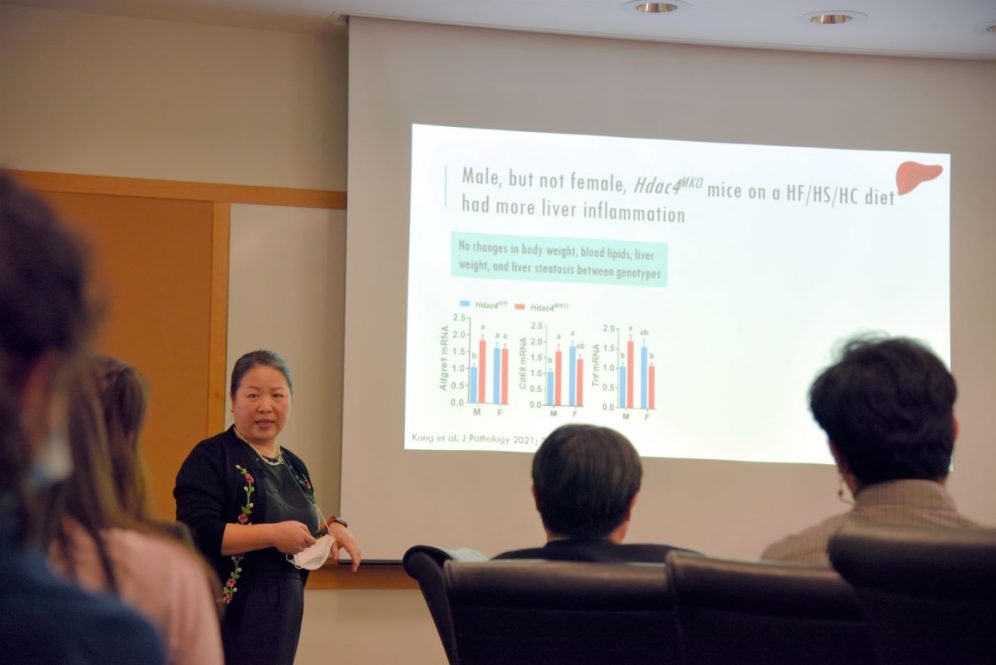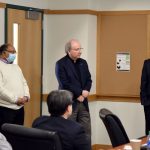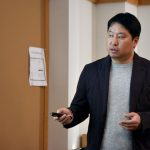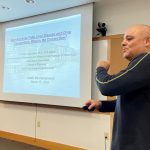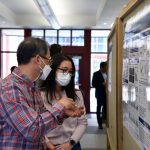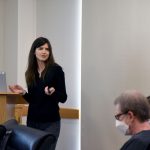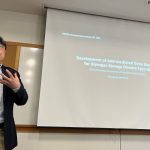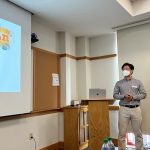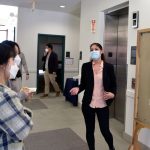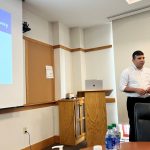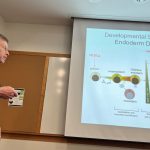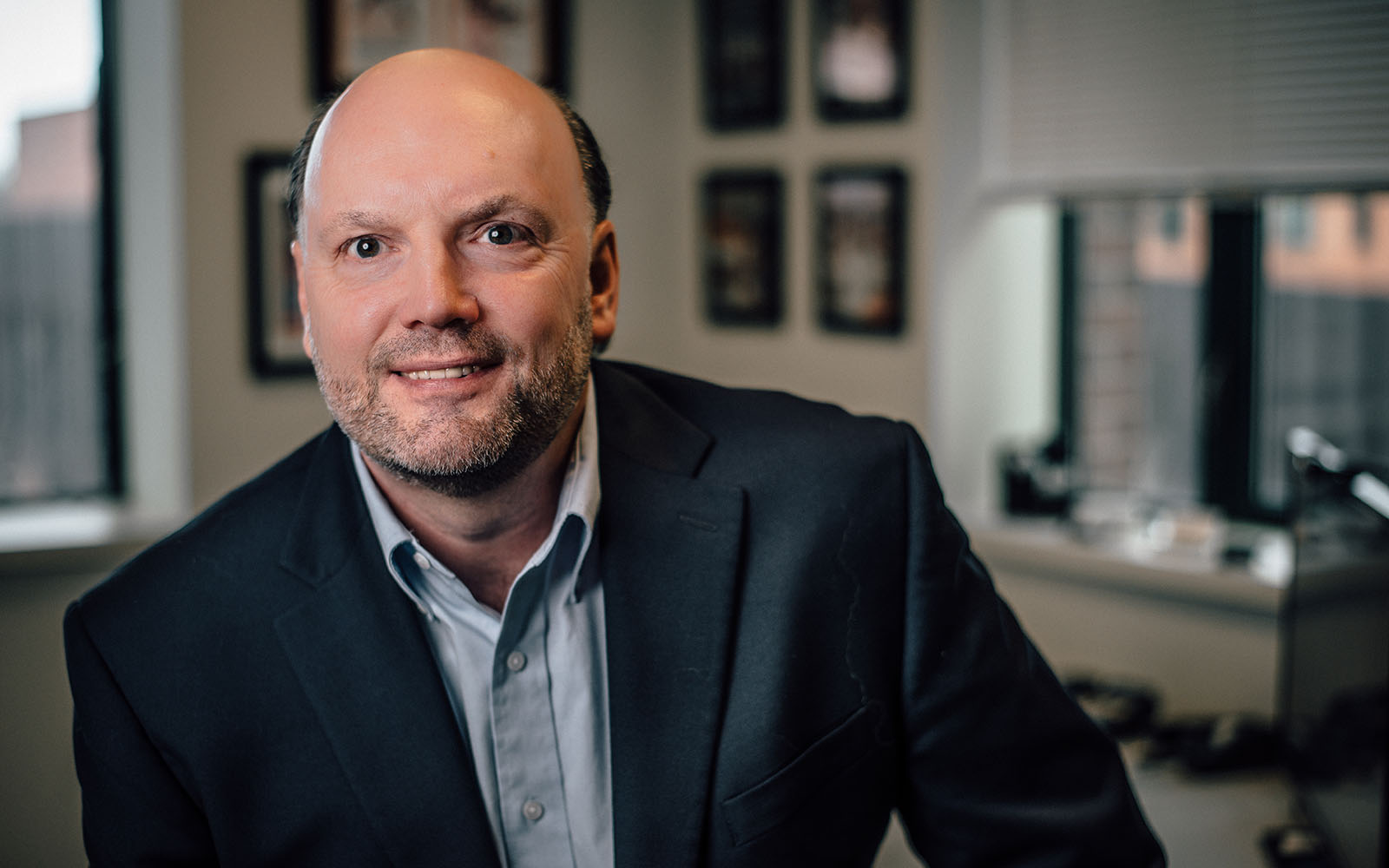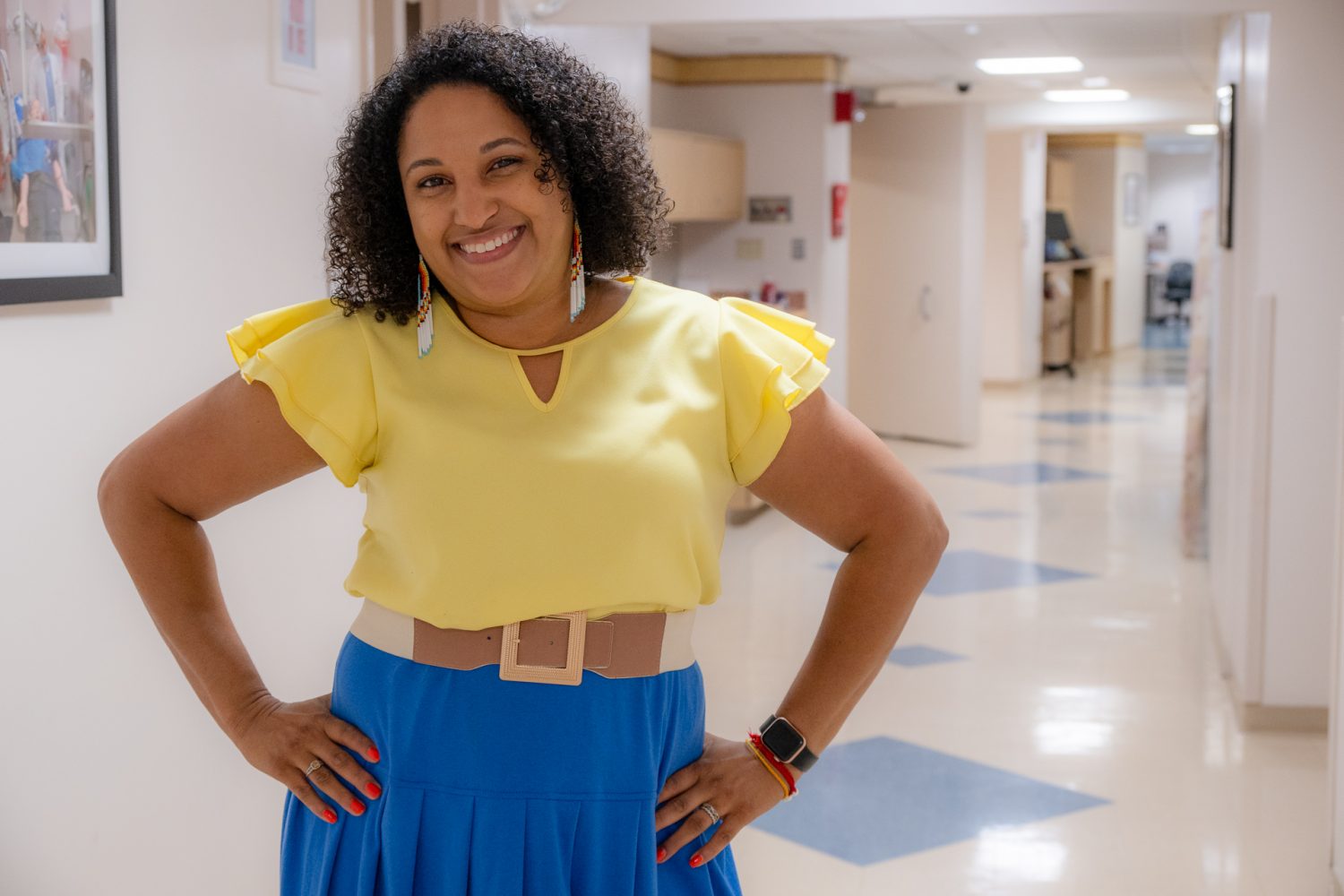The UConn Genetic and Mechanistic Metabolism Group (GMMG),established in 2021, recently held their first mini symposium. The event brought together UConn faculty members, laboratory trainees, and students from the College of Agriculture, Health and Natural Resources (CAHNR), School of Pharmacy, and the School of Medicine for research presentations.
In addition to the speakers, a research poster presentation was held with several UConn students from various majors sharing research conducted under the mentorship of faculty. The presentations served to illustrate the work of each involved school and prompt ideas for collaboration.
“It was exciting to hold our first mini symposium and that we were able to meet together for the first time in-person,” says Ji-Young Lee, professor and head of the Department of Nutritional Sciences and one of the founders of the UConn GMMG.
UConn GMMG was created to facilitate collaboration across the University and promote innovative research in a broad range of complementary areas, including liver pathophysiology and metabolic diseases, drug metabolism, nutrition, epigenetic regulation of gene expression, dyslipidemia, obesity, and nano-delivery systems for nutraceuticals and drugs. The diversity of the group extends beyond the fields of study of its members and into the experimental methodologies they employ, including the use of animal and cell culture models, molecular biological and cell biological approaches, metabolic assays, and genomic approaches.
The group’s stated goal is to foster scientific excellence in such critical areas of research, to strive toward better integration between basic sciences and translational research, to enhance educational and research training offerings, and to increase UConn’s prominence in these areas of investigation and appeal to future faculty hires into this core.
“We knew there was much we could learn from one another in our work on promoting health and preventing and treating disease,” says Lee. “We each take different approaches and look at diverse aspects in many of the same research areas. It just made sense to share this knowledge regularly with each other.”
The UConn GMMG began to meet informally to share their research when faculty members from the Department of Nutritional Sciences and the Department of Pharmaceutical Sciences found they had similar interests related to the liver and metabolism. The School of Medicine then became represented in the group by Youngmok Lee, assistant professor of pediatrics through his work on glycogen storage disease, a liver disease. Oh Sung Kwon, assistant professor in the Department of Kinesiology also joined the group to share his research on senescent cells, older cells which cease to divide, but remain in the body, affecting healthy cells and are connected to aging.
“I share the same vision with Dr. Lee that highly innovative and transformative science is at the intersection of multiple disciplines and that our GMMG initiative can become a strong core and fertile ground for securing complex, multi-investigator extramurally funded projects. One of our goals is to expand and strengthen this core with new faculty hires,” says José Manautou, professor and head of the Department of Pharmaceutical Sciences.
In a strong show of support for the UConn GMMG’s activities at the mini symposium, CAHNR Dean Indrajeet Chaubey, School of Pharmacy Dean Philip Hritcko, and Associate Vice President for Research Innovation and Entrepreneurship Abhijit Banerjee from the Office of the Vice President for Research, joined the proceedings for remarks. They praised the group’s interdisciplinary research goals and the exciting collaborations it was enacting across disciplines at UConn.
“I’m proud that our College is a part of this exciting group of researchers,” says CAHNR Dean Indrajeet Chaubey. “Our faculty and students have shown great initiative in forming this group with the School of Medicine and School of Pharmacy. I am thrilled by the collaborations it has produced and look forward to the continued output of this group as it ensures UConn continues to be a top research institution.”
Follow UConn CAHNR on social media
